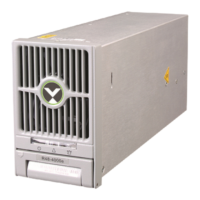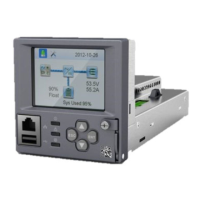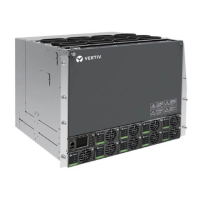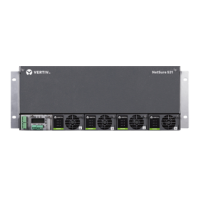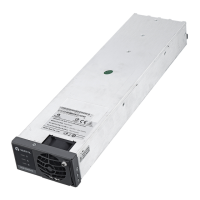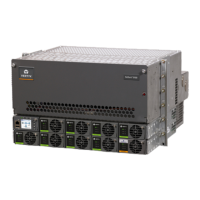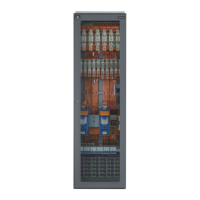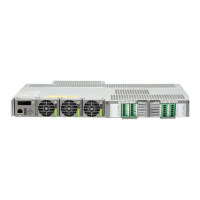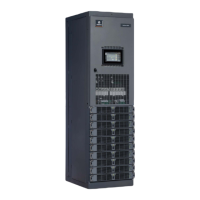NetSure
™
Control Unit (NCU)
User Manual, UM1M830BNA
Spec. No: 1M830BNA, 1M830DNA Code: UM1M830BNA
Model No: M830B, M830D Revision M, May 12, 2017
Requirements and Conditions
The two DC power systems must be connected in parallel as
described in “Paralleling the Existing and NCU Power Systems” on
page 33.
Before paralleling the two systems, the following conditions must
be met for proper Power Split function.
NOTE: The control features of the combined system are
limited to those of the original power system.
NOTE: The same type of batteries with an equal amount of
cells and the same charging voltages must be used for both
systems.
The float voltage, equalize voltage, and battery test
voltage of the NCU power system must be set to the
same levels as that of the existing power system.
The remote sense, if available and connected, of both the
NCU power system and existing power system must be
connected to the same point.
If batteries are used, they must be of the same type.
All the functions specific to the existing power system
and NCU power system and which depend on the voltage
or which act on the voltage must be disabled from the
existing power system and NCU power system. This
includes the following…
a. any equalization function,
b. any temperature compensation function,
c. any charge control function,
d. any battery discharge test function, and
e. any invalid current alarm.
In lieu of this, if battery charging and battery test functions are
implemented in the existing power system, they can remain if
signals for starting are connected from the control system of the
existing system to the NCU system.
Paralleling the Existing and NCU Power Systems
Important Safety Instructions
General Safety
DANGER!
YOU MUST FOLLOW APPROVED SAFETY PROCEDURES.
Performing the following procedures may expose you to
hazards. These procedures should be performed by
qualified technicians familiar with the hazards
associated with this type of equipment. These hazards
may include shock, energy, and/or burns. To avoid
these hazards:
a) The tasks should be performed in the order
indicated.
b) Remove watches, rings, and other metal objects.
c) Prior to contacting any uninsulated surface or
termination, use a voltmeter to verify that no
voltage or the expected voltage is present. Check
for voltage with both AC and DC voltmeters prior to
making contact.
d) Wear eye protection.
e) Use certified and well maintained insulated tools.
Use double insulated tools appropriately rated for
the work to be performed.
AC Input Voltages
DANGER! This system operates from AC input voltage
capable of producing fatal electrical shock.
DC Output and Battery Voltages
DANGER! Connecting the NCU power system to an
existing power system for “Power Split” mode involves
working on live equipment carrying live loads. This
system produces DC Power and may have a battery
source connected to it. Although the DC voltage is not
hazardously high, the rectifiers and/or battery can
deliver large amounts of current. Exercise extreme
caution not to inadvertently contact or have any tool
inadvertently contact an output terminal or battery
terminal or exposed wire connected to an output
terminal or battery terminal. NEVER allow a metal
object, such as a tool, to contact more than one
termination or battery terminal at a time, or to
simultaneously contact a termination or battery
terminal and a grounded object. Even a momentary
short circuit can cause sparking, explosion, and injury.
Remove watches, rings, or other jewelry before
connecting leads. Cover any live busbars with a canvas
sheet to prevent short circuits caused by falling tools or
parts.
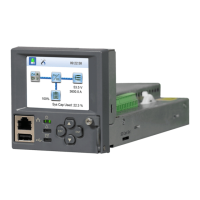
